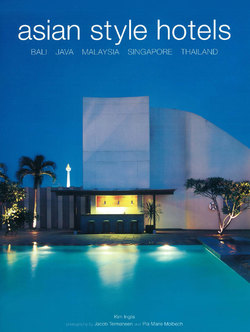Читать книгу Asian Style Hotels - Kim Inglis - Страница 16
ОглавлениеThe Dharmawangsa Jakarta
The arm of the Dharmawangsa's exclusivity extends even into Jakarta airport where a representative of the hotel meets guests prior to customs and immigration. He welcomes you, takes your passport, whisks you past queues of people, gets your passport stamped, organizes your luggage—and within moments you're in the latest BMW or a classic Bentley heading into town. The airport boulevard, lined on either side by fish farms, half-completed buildings, and the sight of hundreds of kites flying in the sky, is a blur. You are relaxing in the back, playing with the gizmos (if you're a guy), checking out the magazines (if you're a girl) and luxuriating in the fact that everyone else on your plane is still waiting in line at immigration.
"A stay at the Dharmawangsa starts with the transfer," explains the general manager, "so we like to pick guests up wherever they are. It is part of the overall Dharmawangsa experience."
If you think this is sound, sensible, pampering and kind—wait until you reach the hotel itself. Situated in the prestigious Kebayoran Baru residential district south of the city center, the hotel is set just back from a quiet shady street in an ample garden setting. An open columned verandah leads into a marble-cool front lobby, where superlative smiles, friendly faces and a chorus of selamats greet you. Then it is just a quick walk to your room or suite for in-room check-in. The mesmeric scent of jasmine hangs in the air as large ceramic pots full of the blooms are artfully arranged on long fan-shaped sticks.
As befits both location and concept, the hotel has a distinctly residential feel. Designed to showcase the many facets of both modern and ancient Indonesia, the Dharmawangsa consists of a series of linked spaces with a central atrium and four lounges at its center. Dharmawangsa was an 11th century Hindu king from East Java who laid the foundations of the great Majapahit Empire—so it is fitting that the hotel's interior design pays tribute to the extraordinary artistic achievements of the era.
The heart and soul of the hotel consists of the central Majapahit Hall. Here, two musicians and a stall serving Javan sweetmeats and teas flank an obelisk with 14th century temple decoration. Off this hall radiate four lounges, sumptuously decorated by interior design maestro Jaya Ibrahim. The tea lounge is all colonial rattan, swaying palm fronds, dappled light and shade from Venetian blinds, linen napkins and silver service. The adjacent library with floor-to-ceiling book shelves and custom-carved cabinetry is a clubby mix of dark green silk and amber upholstery, while the caviar lounge showcases a priceless collection of antique jewelry from Sumatra set in 25 glass cases on a silk covered wall (see left). Adjacent this is the bar, where chocolate martinis and cigars from the well-stocked humidor are the order of the evening.
